



Cataracts are one of the leading causes of visual impairment the world over. A cataract is a clouding or opacity of the natural lens inside the eye. The lens is located just behind the iris (the colored part of your eye). It functions somewhat like the lens on a camera, focusing the light that enters your eye onto the retina. However, when the lens becomes cloudy, it prevents light and images from passing through to the retina, and the vision becomes impaired.
Cataracts can develop for a variety of reasons. By far, the most common cause of cataracts is the natural aging process. It accounts for over 90% of all cases of cataracts. As you age, the proteins found in the natural lenses of your eyes begin to clump together; this clouds the lenses and leads to vision problems. Medications, trauma, diabetes, genetics and ultraviolet light can also contribute to the development of cataracts.
The majority of cataracts affect patients over 50 years of age; this is because of the slow degeneration of the eye's natural lens. Though uncommon, it is possible for cataracts to develop in infants and young children. These congenital cataracts can be caused by a variety of reasons, such as an infection or inherited traits.
The most common symptom of cataracts is blurred vision. Other symptoms can include glare (i.e. car headlights at night), dull colors, double vision, increased sensitivity to light, eye strain and a yellowish discoloration of your vision.
Common Cataract Symptoms:
Different cataract treatments are available to improve your vision. The presence of a cataract alone isn't an indication for cataract surgery. Many cataracts are mild, and require no treatment in the absence of significant symptoms. Sometimes a change in your prescription will help reduce some of the blurred vision induced by the cataract. However, when the vision is affected to the point that your daily activities are affected (driving at night, reading stock quotes, etc.) cataract surgery is indicated. While this prospect often frightens some patients, the opportunity to restore clear, sharp vision makes cataract surgery one of the safest and most successful operative procedures. Patients are amazed that they can often see better the day after the surgery than they have in many years.
There are a variety of cataract surgery techniques available to restore clear vision. Cataract surgery removes the clouded lens from the eye and replaces it with a clear, artificial lens. Dr. Filer provides innovative cataract treatments, including standard cataract surgery, laser cataract surgery and intraocular lenses (IOLs) to enhance clarity and focus.
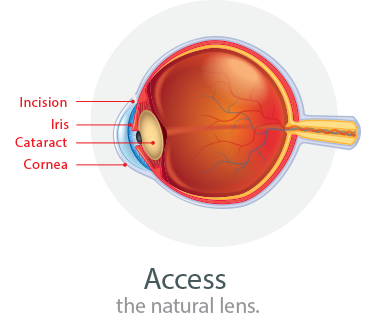
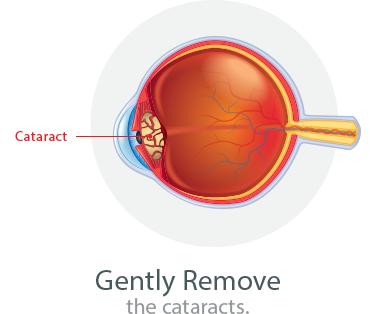
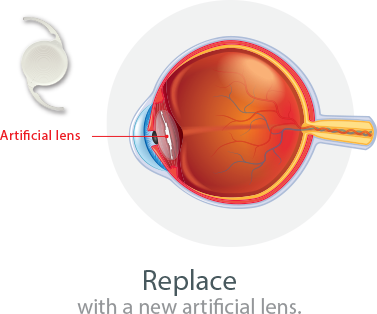
Cataract surgery is an outpatient procedure that will only take a few hours. When you arrive, your eyes may be treated with eye drops and an anesthetic to minimize any discomfort. During this routine operation, a small incision is made in the eye. Your surgeon will use a tiny instrument (about the size of a pen tip) to remove your clouded lens. This can be done with an ultrasonic instrument that breaks up and gently removes your cloudy lens (called phacoemulsification). Once this is accomplished, your surgeon will insert an artificial intraocular lens (IOL) into your eye. Dr. Filer uses a variety of advanced technology lenses that can be customized to suit the needs of each patient undergoing cataract surgery.
After the procedure, you'll be given a short time to rest. Then, the very same day, you can go home. Within the next 24 hours, your doctor will probably want to see you for an evaluation. Drops will be prescribed to guard against infection and to help your eyes heal. For a few days, you may need to wear a clear shield, especially at night, to prevent you from rubbing your eye.
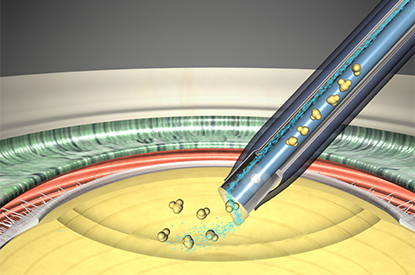
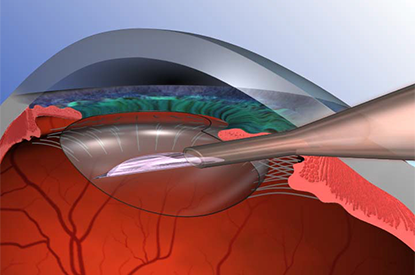
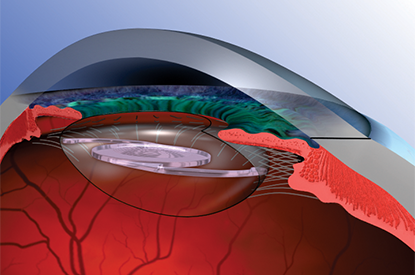
Learn more about your cataract treatment options below:
To learn more about cataracts, as well as cataract treatments, contact our San Mateo office at 650.342.4595 or request an appointment today.